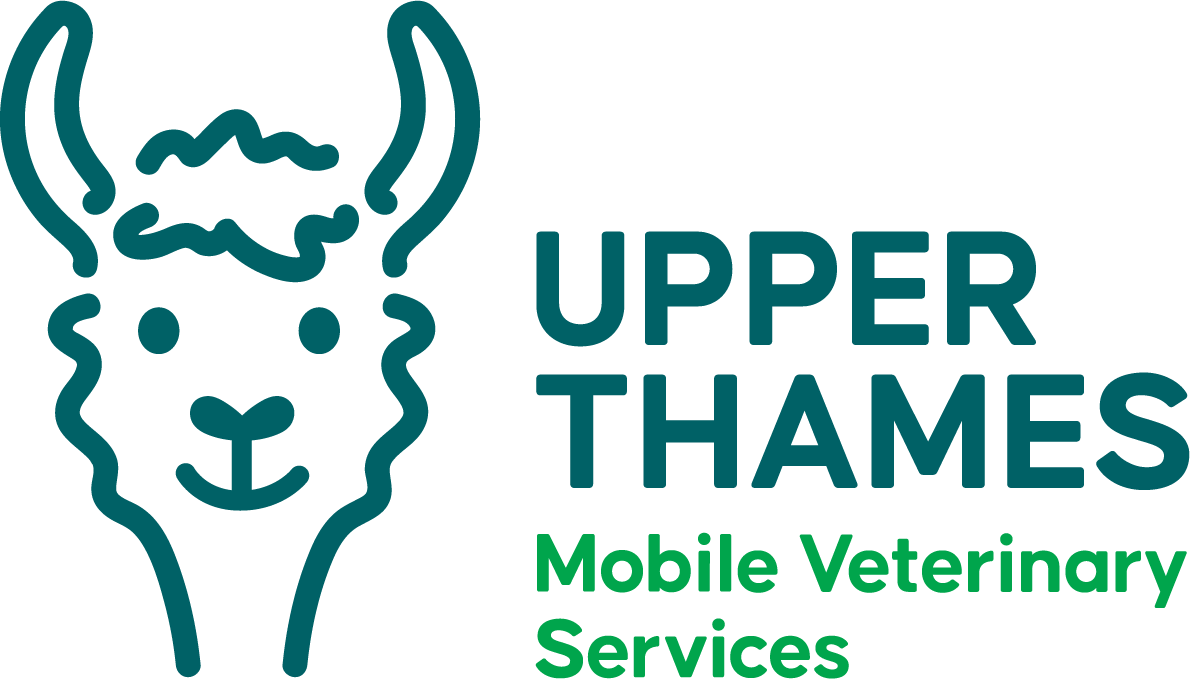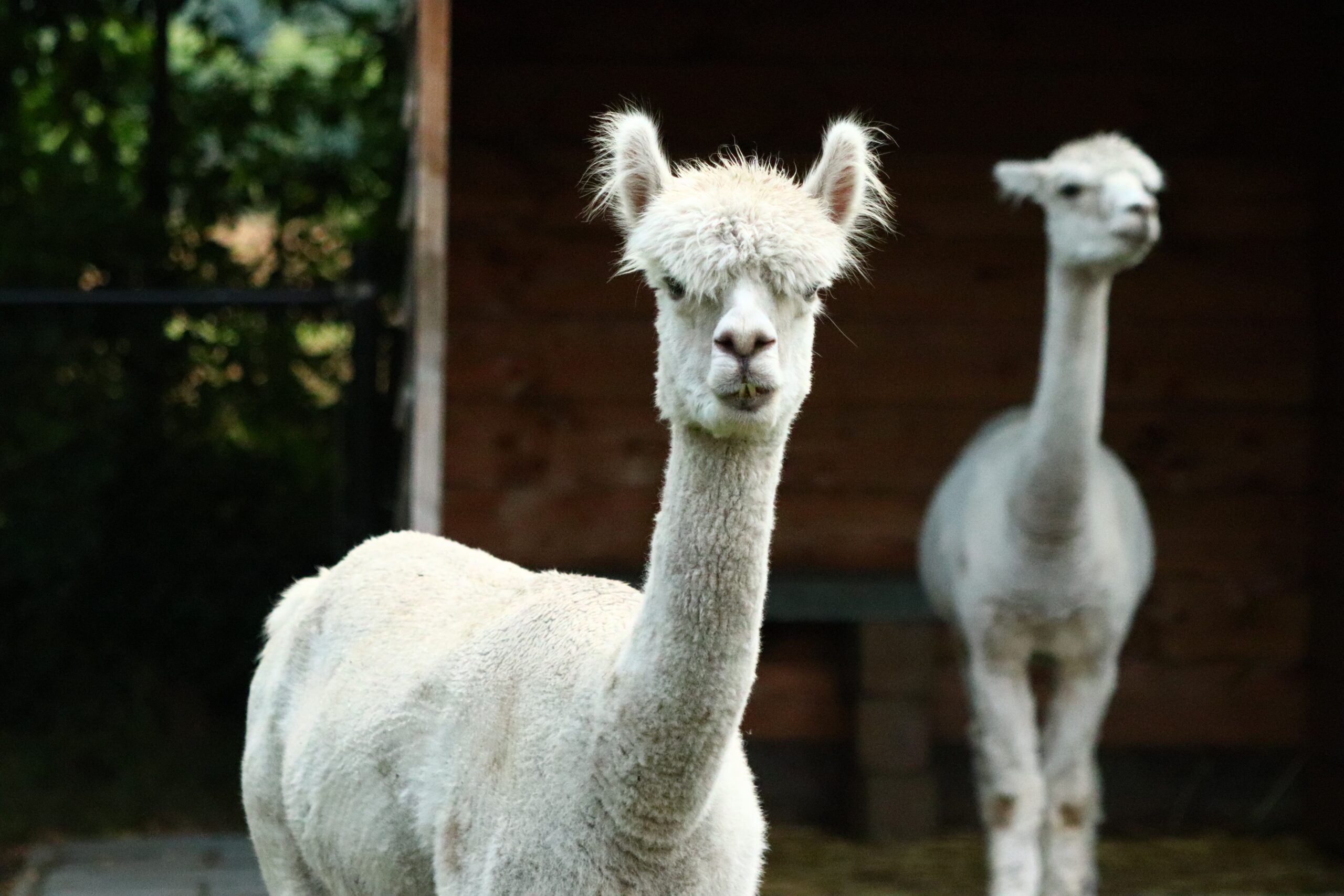Written by: Bria Osborne, OVC 2026
Edited by: Dr. Paisley Canning
Vet visits are a crucial part of owning any type of animal. However, you may have found that they can be a source of stress for both you and your animal. We have compiled a list of some preparations that can be made ahead of your vet visit to help you get the most out of your visit and help it run as smoothly as possible. Our goal is to have all humans and animals be as safe and calm as possible.
Lock your alpaca in a confined space ahead of your visit
Alpacas are shy and wary creatures. It is impossible for your veterinarian to properly perform a physical exam on your alpaca if they cannot get close to it. Additionally, getting chased around the pasture is a major stressor for Alpacas. Therefore, putting your Alpacas in a confined space ahead of your visit allows for your alpacas to calm down before the vet arrives.
Keep herd mates together or within sight of an ill or injured alpaca
Alpacas are herd creatures and feel the most safe and secure when their herd mates are around. If you have an alpaca that requires medical care, allowing them to stay with their herd mates or having them in sight will decrease stress.
Have proper handling equipment ready
Alpaca halter:
A “halter” is a piece of equipment that is fastened to an animal’s head to facilitate handling and leading (figure 1). Having a halter for your alpacas allows for proper handling in a medical setting. Having good control over your alpaca will increase human and animal safety. It is important to note that there are many different types of halters for different species, be sure that you purchase an alpaca halter to accommodate for their unique face shape.

Photo credit: Homestead farm supplies
Figure 1: Above is an example of an alpaca halter.
Lead rope:
A lead rope is a piece of equipment that get attached to the halter (figure 2) for handling and leading.

Figure 2: Above demonstrates two alpacas with halters on. Note how the lead rope attaches to the bottom ring of the halter.
Catch rope and wand:
Putting on a halter may prove to be a difficult task if you cannot get close to your alpacas. A catch rope with a clip want is a great tool for catching your alpacas to place a halter on them. Using a catch rope and wand is a low stress way of catching your alpacas.

Photo Credit: CAMELIDynamics
Figure 3: Above is a photo of a catch rope and wand.
The process for using a catch rope and wand is as follows:
- Confine your animal to a small pen (Figure 4)
- Gently, using the wand to guide the rope, bring the rope across the back of your alpaca’s neck (Figure 5)
- Guide the rope gently across the front of your alpaca’s neck (Figure 6)
- Pull the wand towards you to bring the rope back to your hand (Figure 7)
- Unclip the wand and hold both ends of the rope (Figure 8)
- You have now caught your alpaca (Figure 8)
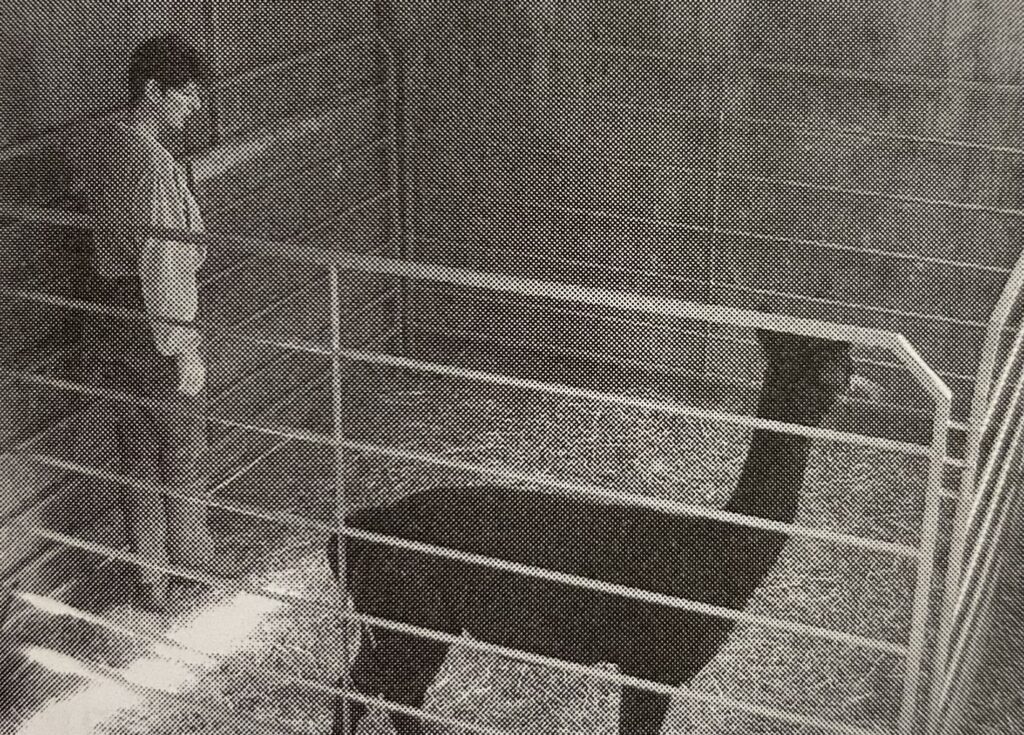
Photo credit: The Camelid Companion by Marty McGee Bennett
Figure 4: Confine your alpaca to a small pen to facilitate catching
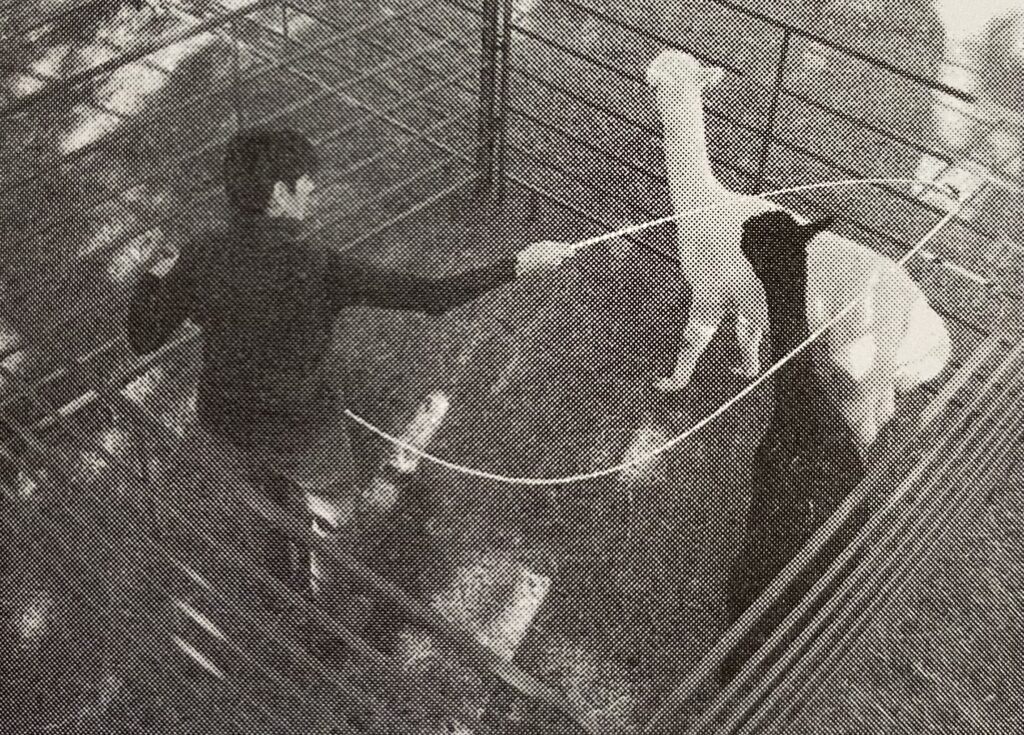
Photo credit: The Camelid Companion by Marty McGee Bennett
Figure 5: Use the wand to guide the rope across the back of the alpaca’s neck

Photo credit: The Camelid Companion by Marty McGee Bennett
Figure 6: Gently guide the rope across the front of the neck
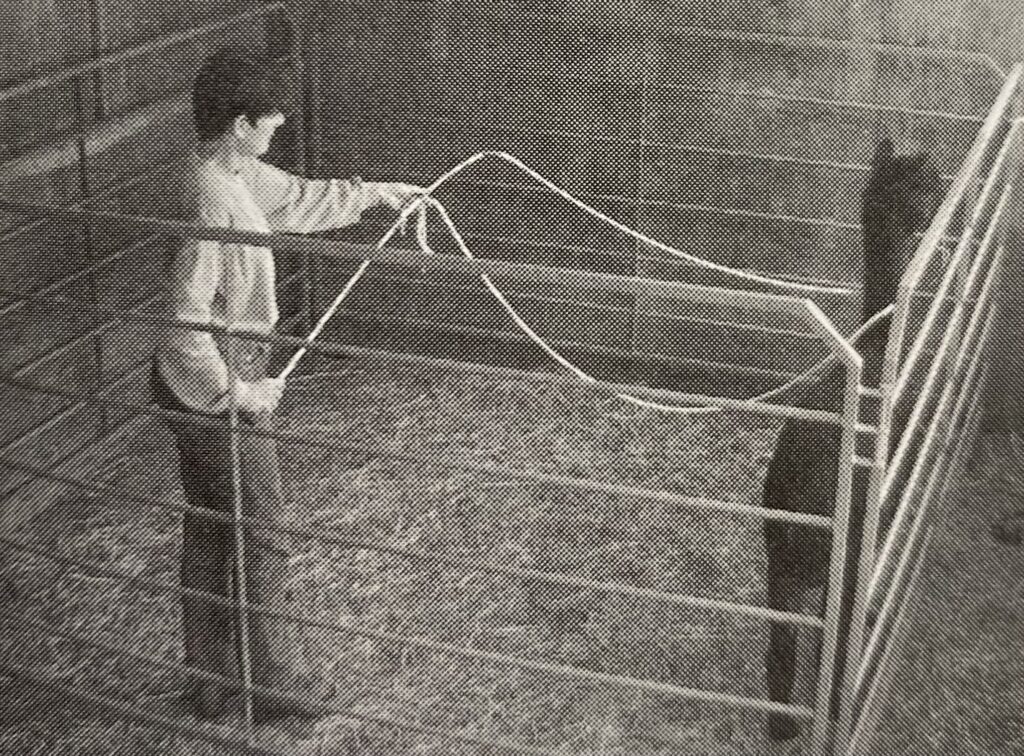
Photo credit: The Camelid Companion by Marty McGee Bennett
Figure 7: Pull the wand towards yourself and grab the rope
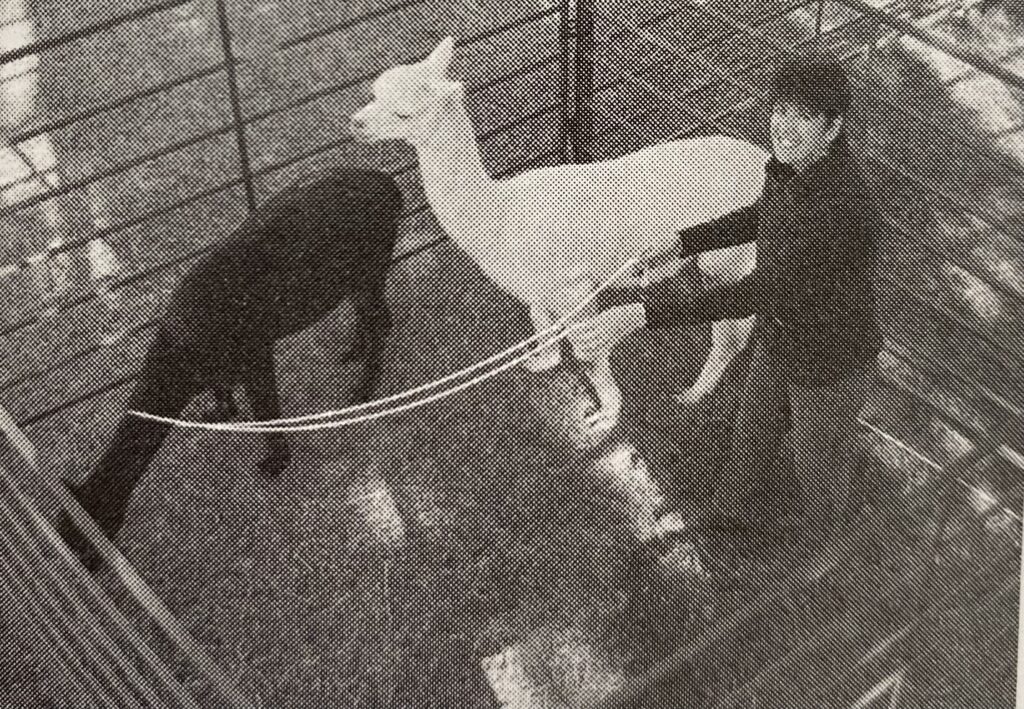
Photo credit: The Camelid Companion by Marty McGee Bennett
Figure 8: Unclip the wand and hold both end of the rope.
Pull out any medications you have ahead of time to show your vet
Having your medications out for your vet to look at provides them with insight on what you have to work with in emergency situations. Showing your vet medications that you have been giving also gives them more insight into the animal’s history. Your vet can also re stock and get you set up with additional medications and supplies.
Be prepared with any records you have
Keeping records and providing them to your vet upon their visit provides them with a lot of great information into your alpaca’s current health and their history. If problem solving is needed by the vet, records are excellent resources. Records can include where and when you got your alpacas, their birthdate, age, weight, previous medical history, breeding dates, vaccination records etc.
Have any equipment like hoof trimmers etc. out to show your vet
Having any equipment like your hoof trimmer out for the vet to look at is helpful. Your vet can give input and give recommendations on how and when to use your tools. If you shear your alpacas yourself, having your shearers out is also recommended.
References:
The Camelid Companion by Marty McGee Bennett
